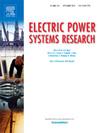A correction method for wind power forecast considering the dynamic process of wind turbine icing
IF 3.3
3区 工程技术
Q2 ENGINEERING, ELECTRICAL & ELECTRONIC
引用次数: 0
Abstract
In order to improve the accuracy of wind power forecast (WPF) in wind turbine icing scenarios, this paper proposes a methodology for the correction of WPF that takes into account the impact of dynamic ice accumulation processes. Firstly, the icing calculation formula applicable to wind turbine blades is derived based on the Makkonen model. Concurrently, multiple sets of simulations are performed by FENSAP-ICE software to obtain the key parameters of icing calculation formula under discrete weather conditions. Then, the Kriging interpolation algorithm is introduced to construct continuous mapping functions from weather conditions to icing parameters, allowing real-time icing degree can be calculated using the icing formula derived from numerical weather prediction (NWP) data, thereby describing the dynamic icing process. Finally, an additional correction model based on few-shot learning is proposed, which can maintain good forecast performance with sparse ice cover samples. By forecasting wind power loss under varying icing conditions, the model corrects the WPF results, and the case studies demonstrate that after applying the proposed methodology, the accuracy of WPF under icing conditions is significantly improved.
考虑风电机组结冰动态过程的风电功率预报校正方法
为了提高风电机组结冰情景下的风电功率预报精度,本文提出了一种考虑动态积冰过程影响的风电功率预报校正方法。首先,基于Makkonen模型推导了适用于风力机叶片结冰的计算公式。同时,利用FENSAP-ICE软件进行多组模拟,得到离散天气条件下结冰计算公式的关键参数。然后,引入Kriging插值算法,构建天气条件到结冰参数的连续映射函数,利用数值天气预报(NWP)数据推导出的结冰公式计算实时结冰程度,从而描述动态结冰过程。最后,提出了一种基于few-shot学习的附加校正模型,该模型可以在稀疏的冰盖样本下保持良好的预测性能。通过对不同结冰条件下风电损失的预测,该模型对WPF结果进行了修正,实例研究表明,应用该方法后,WPF在结冰条件下的精度得到了显著提高。
本文章由计算机程序翻译,如有差异,请以英文原文为准。
求助全文
约1分钟内获得全文
求助全文
来源期刊

Electric Power Systems Research
工程技术-工程:电子与电气
CiteScore
7.50
自引率
17.90%
发文量
963
审稿时长
3.8 months
期刊介绍:
Electric Power Systems Research is an international medium for the publication of original papers concerned with the generation, transmission, distribution and utilization of electrical energy. The journal aims at presenting important results of work in this field, whether in the form of applied research, development of new procedures or components, orginal application of existing knowledge or new designapproaches. The scope of Electric Power Systems Research is broad, encompassing all aspects of electric power systems. The following list of topics is not intended to be exhaustive, but rather to indicate topics that fall within the journal purview.
• Generation techniques ranging from advances in conventional electromechanical methods, through nuclear power generation, to renewable energy generation.
• Transmission, spanning the broad area from UHV (ac and dc) to network operation and protection, line routing and design.
• Substation work: equipment design, protection and control systems.
• Distribution techniques, equipment development, and smart grids.
• The utilization area from energy efficiency to distributed load levelling techniques.
• Systems studies including control techniques, planning, optimization methods, stability, security assessment and insulation coordination.
 求助内容:
求助内容: 应助结果提醒方式:
应助结果提醒方式:


